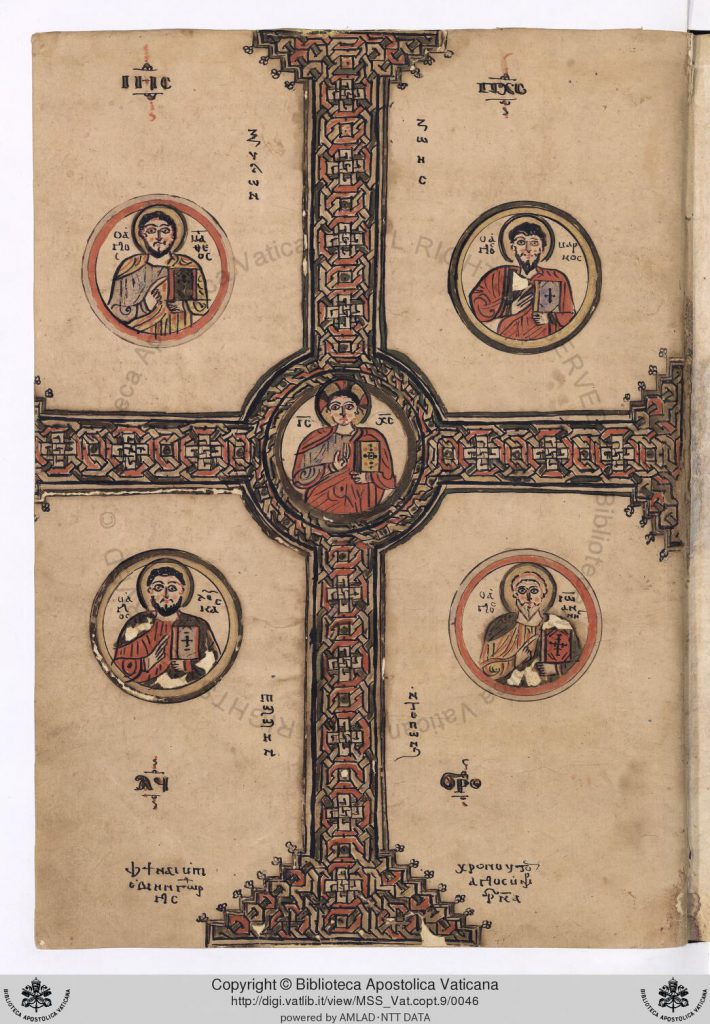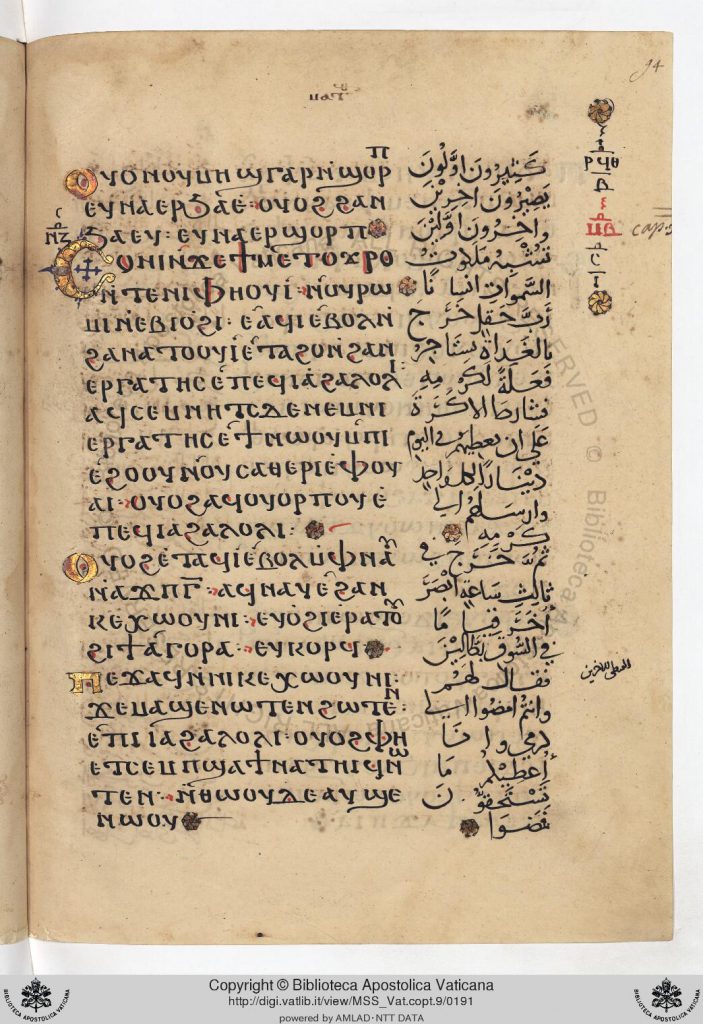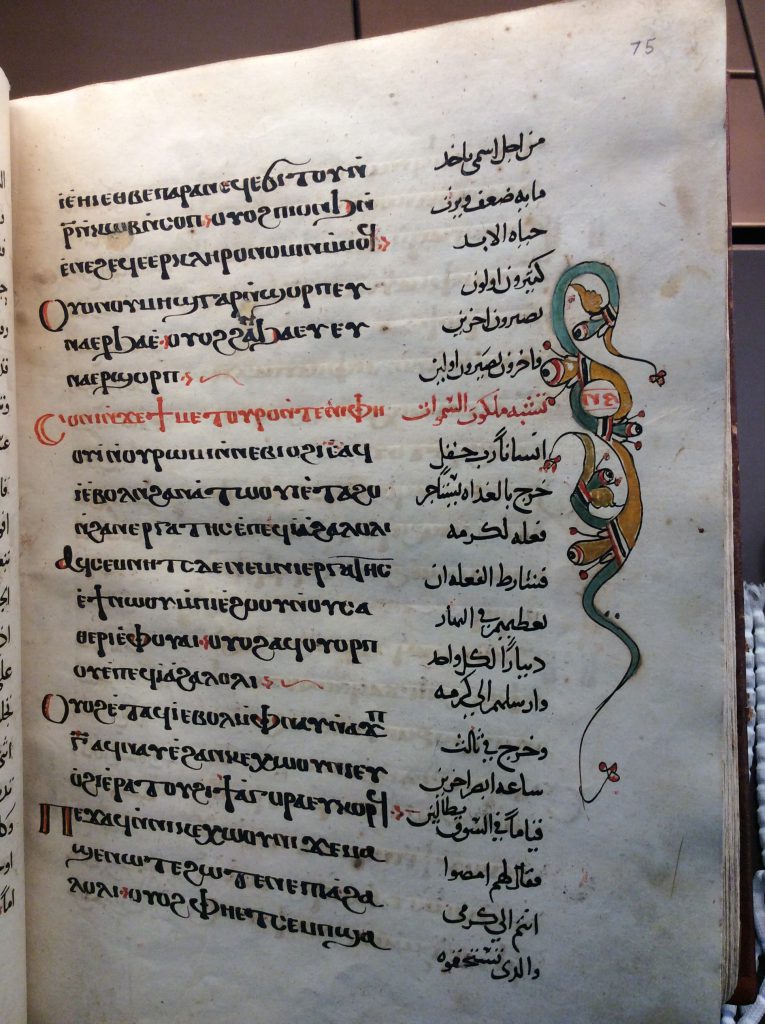by Roy M. McCoy III
On the cusp of the early modern period, one Muslim scholar in late Mamlūk Cairo quoted liberally from the scriptures of the religious “other.” Ibrāhīm b. ʿUmar b. Ḥasan al-Biqāʿī (d. 885 AH/1480 CE) used the canonical Hebrew and Christian scriptures in his Qurʾān commentary, tafsīr, in order to supplement his interpretation of the qurʾānic text. However, the use of the Bible in Islamic contexts was nothing new. From the inception of Islam, Muslims had turned to the biblical corpus in order to explain stories evoked by the Qurʾān. Biqāʿī followed in this long tradition of Muslim scholarship on the Bible, but raised the exegetical bar higher by giving especial attention to his biblical source materials. This is exemplified by what becomes a formulaic statement before quoting from the Gospels: “This is what is mentioned from the four Gospels that the Christians have with them presently, at this time, at the end of this ninth century.” Biqāʿī was keen to ensure his audience that the biblical text he quoted was, in fact, authentic contrary to the common Muslim belief that it had been completely distorted.
Moreover, the quotient of Gospel material used by al-Biqāʿī in his tafsīr1 is nonpareil in the Islamic tradition. The total number of direct quotations from the four Gospels amounts to 72% of Matthew, 41% of Mark, 58% of Luke and 47% of John.2 What is more, he also retains almost all of the Christian Arabic features from his source text. That is to say, instead of using the more Islamic Yaḥyā for “John” he opts for Yūḥannā, and rather than jettison language difficult for Muslim sensibilities, such as “father” and “son” with reference to “God” and “Jesus,” respectively, in favor of more palatable terms, such as “Lord” and “servant,” he keeps the quotation intact and unislamicized.
One of the most natural questions to arise given al-Biqāʿī’s commitment to his source texts is as to which Arabic version of the Gospels he used in his commentary? To answer that question it will be helpful if we analyze a portion of quoted material from his tafsīr to see if it aligns with any Arabic versions circulating during his epoch. At the close of the 9th AH/15th CE century, one such version appears to have been disseminated widely in al-Biqāʿī’s Cairene context: the Alexandrian Version. The Alexandrian Version is an edition of the Arabic Gospels created from using available Arabic translations from Coptic, Syriac and Greek Vorlagen.3 An abundance of manuscripts attest that by the close of the 7th AH/13th CE the Alexandrian Version superseded all other Arabic translations and became the standard Arabic text of the Gospels.4
There is one hint found in a comment by al-Biqāʿī that suggests that his edition of the Alexandrian Version was arranged according to a Coptic calendar.5 He makes a reference while quoting from the Gospel of Matthew: “He says in the tenth chapter of it (fī faṣl al-ʿāshir minhi), ‘Pray to your Father secretly, and your Father sees the secret and He will give to you openly’” (Matthew 6:6).6 The sixth chapter of Matthew’s Gospel corresponds with the end of the tenth and the beginning of the eleventh chapter in the Coptic Gospels.7 Therefore al-Biqāʿī’s edition aligns with a Coptic text, which will be represented here by the bilingual Coptic-Arabic manuscript, Vatican BAV, MS Copt. 9 (ca. 1204 CE).8 Let’s compare a quoted Gospel passage with MS Vat. Copt. 9 as an example 1) to show how al-Biqāʿī uses the Arabic Bible in his Qurʾān commentary and 2) to provide further evidence for the wide circulation of Alexandrian Version in a) Muslim and b) Christian contexts.

Portrait of the four Gospel authors found in BAV MS Vat. Copt. 9 f.20v
© Biblioteca Apostolica Vaticana

© Biblioteca Apostolica Vaticana
The Arabic Version of Matthew’s Gospel
Biqāʿī uses Matthew 20:1-16 under his interpretation of sūrat al-Aʿrāf (Q 7:157). Here the first four verses of that passage will be explored:
Alexandrian:
“The kingdom of heaven is like a man, a lord of a field, who went out early in the morning to hire labourers for his vineyard. So he made a contract with the tillers (of the land) on the condition that he would give a denarius to each one for the day, and he sent them into his vineyard. And again he went out in the third hour and saw others standing idle in the market place. And he said to them: ‘You go into my vineyard, and that which you rightfully earn I will give to you.’ So they went out.”
Biqāʿī:
“The kingdom of heaven is like a man, a lord of a house, who went out early in the morning to hire labourers for his vineyard. So he made a contract with the tillers (of the land), a denarius only for the day, and he sent them into his vineyard. And again he went out in the third hour and saw others standing idle in the market place. And he said to them, ‘You go into my vineyard, and whatever is right I will give you.’”
Alexandrian (f.94r)
(1) تشبه ملكوت السموات انسانًا رب حقل خرج بالغداة يستاجر فعلة لكرمه
(2) فشارط الأكرة على ان يعطيهم في اليوم دينارًا لكل واحد وارسلهم الي كرمه
(3) ثم خرج في ثالث ساعة ابصر اخر قيامًا في السوق بطالين
(4) فقال لهم: انتم امضوا الي كرمى وأنا أعطيكم ما تستحقون فمضوا
Biqāʿī (3:127)
(1) يشبه ملكوت السماوات إنساناً رب بيت خرج بالغداة يستأجر فعلة لكرمه
(2) فشارط الأكرة على دينار واحد في اليوم وأرسلهم إلي كرمه
(3) ثم خرج في ثالث ساعة فأبصر آخرين قياماً في السوق بطالين
(4) فقال لهم: امضوا أنتم إلى كرمي وأنا أعطيكم ما تستحقون
In the first verse, the syntax of the first clause agrees between the two texts, but the word choice differs slightly based on the Vorlage of the source text. Biqāʿī’s quote opens with yušbihu malakūt al-samāwāt (“the kingdom of heaven is like […]”). The Alexandrian Version, however, use the feminine form tušbihu here. The Alexandrian Version also seems to follow a Coptic Vorlage with rabb ḥaql (“lord/master of a field”) — the Coptic Bohairic reading is “master of a field” (ⲛⲉⲃⲓⲟϩⲓ/nebiohi, ⲓⲟϩⲓ9 agreeing semantically with (Arab.) ḥaql). However, the text of Biqāʿī, rabb bayt (“lord of a house”), follows the Syriac source text, which is ‘house’ (ܒ݁ܰܝܬ݁ܳܐ/baytā) in the Pešiṭtā. The second clause ḫaraja bi-l-ġadāh yastʾajira faʿalah li-karmihi (“he went out in the morning to hire labourers for his vineyard”) agrees syntactically and lexically between Biqāʿī’s version and the Alexandrian.

Let’s have a look at the next two verses. Biqāʿī’s text agrees with the Alexandrian in the opening sequence with the use of fa-šāraṭa (“So he made a contract (with) […]”). The second phrase in the Alexandrian, al-akarah ʿalā an yuʿṭīhum (“the tillers [of the land] on the condition that he would give them […]”), differs from Biqāʿī’s text, which simply has the object al-akarah (“the tillers [of the land]”) without introducing a new verb. The syntax and vocabulary of the third phrase of verse 2 differs slightly between each text. Biqāʿī’s reading is ʿalā dīnār wāḥadin fī-l-yawm (“a denarius, only for the day”) and the Alexandrian uses fī-l-yawm dīnāran li-kull wāḥidin (“a denarius to each one for the day”). The final clause is identical between Biqāʿī’s quotation and the Alexandrian: wa-arsalahum ilā karmihi (“then he sent them to his vineyard”). There is little grammatical difference between Biqāʿī’s text and the Alexandrian in verse 3. The syntax remains consistent and both Biqāʿī’s material and the Alexandrian omit waqt here and use ṯumma to introduce the opening sequence. In the second clause, both texts agree with the verbal use of abṣara (“he saw”) and the phrasing that follows.
With respect to the fourth verse, the syntax and lexical choices deviate between both texts in the opening sequence and second clause, but Biqāʿī’s edition and the Alexandrian still remain grammatically close. Both texts use the imperative imḍū (“you go”) and the detached pronoun antum (”you“) with the verb for emphasis, with only a difference in pronoun placement. The third clause agrees syntactically between Biqāʿī’s quote and the Alexandrian, and concerning word choice, with the exception of one addition at the end of the Alexandrian. Both versions of verse 4 read, wa-anā uʿṭīkum mā tastaḥiqqūna (“and I will give you what you have rightfully earned”), but the Alexandrian retains the phrase fa-maḍaw (“so they went out”), which begins verse 5 in the Coptic Bohairic: ⲛⲑⲱⲟⲩ ⲇⲉ ⲁⲩϣⲉ ⲛⲱⲟⲩ/nthōou de auše nōou (“And they went”).10
This small, but important, textual comparison accomplishes several things. First, it demonstrates that al-Biqāʿī’s Arabic translation of the Gospels agrees with the Alexandrian Version. It also shows that the Alexandrian Version, represented here by MS Vat. Copt. 9, has more commonality with its Coptic Bohairic source text than Syriac source materials. Second, the arrangement of the Gospels according to the Coptic calendar in al-Biqāʿī’s edition points toward its wide use within Coptic Christian circles. This is in contrast to Lejla Demiri’s findings with Najm al-Dīn al-Ṭūfī’s (d. 716/1316) edition of the Alexandrian Version whereby his text was arranged according to the Greek calendar, also in Cairo but a century earlier than al-Biqāʿī. Last, this analysis reveals the lengths to which al-Biqāʿī went in keeping the quotations from his edition in line with his source text, and further demonstrates that the Alexandrian Version remained a legitimate Arabic version of the Gospels, even within Muslim contexts, and endured for centuries after its composition.11
Roy M. McCoy III is a research fellow with Qur’an Gateway. He recently completed a DPhil at the University of Oxford on the use of the Arabic Bible in the tafsīrs of Ibn Barrajān (d. 536/1141) and al-Biqāʿī (d. 885/1480). His research interests include the Arabic Bible, Qur’anic Studies, and Muslim Biblical Scholarship.
Suggested Citation: Roy M. McCoy, “The Transmission of the Arabic Bible in Islamic Contexts: Vatican BAV, MS Copt. 9 in al-Biqāʿī’s Tafsīr”, Biblia Arabica Blog, 5 March 2019, DOI: https://doi.org/10.5282/ubm/epub.121798/.
Footnotes
[1] Naẓm al-durar fī tanāsub al-āyāt wa’l-suwar, 22 vols. (Hyderabad: Dār al-Maʿārif al-ʿUthmānīyah, 1976-1982).
[2] These are my figures based on Saleh and Casey’s publication “An Islamic Diatessaron,” as well as my own research.
[3] Kachouh, The Arabic Versions of the Gospels, 214. Kachouh argues that the Alexandrian Version was likely corrected against Gospels of Syriac and Greek Vorlagen rather than Coptic.
[4] Lejla Demiri, Muslim Exegesis of the Bible in Medieval Cairo: Najm al-Dīn al-Ṭūfī’s (d.716/1316) Commentary on the Christian Scriptures (Leiden: Brill, 2013), 66.
[5] L. Villecourt, E. Tisserant and M. Gaston Weit, ‘Livre de La Lampe des Ténèbres,’ in Patrologia Orientalis vol. 20 (Paris: Librarie de Paris, 1929), 608.
[6] Al-Biqāʿī, Naẓm al-durar 4:231.
[7] Villecourt, Tisserant and Weit, ‘Livre de La Lampe des Ténèbres,’ 608.
[8] This manuscript is one of Kachouh’s witnesses for family k, cf. Kachouh, Arabic Versions of the Gospels, 218.
[9] W. E. Crum, A Coptic Dictionary (Oxford: Oxford University Press, 1939), 89; the Coptic text referenced and transcribed here is from Oxford Bodleian Libraries, MS Huntington 17, which is compared with G. Horner’s The Coptic Version of the New Testament in the Northern Dialect Otherwise Called Memphitic and Bohairic with Introduction, Critical Apparatus, and Literal English Translation: Vol. 1, The Gospels of S. Matthew and S. Mark Edited from MS. Huntington 17 in the Bodleian Library (Oxford: Clarendon Press, 1898), 170-5.
[10] Horner, The Coptic Version of the New Testament, 172-3.
[11] For a more in depth analysis of the Arabic Bible in al-Biqāʿī’s Tafsīr, see Roy M. McCoy III, Scriptura Scripturam Interpretatur [Scripture Interprets Scripture]: An Analysis of the Arabic Bible as Used in the Tafsīrs of Ibn Barrajān (d. 536/1141) and al-Biqāʿī (d. 885/1480) (PhD thesis submitted at the University of Oxford, 2019).


Leave a Reply